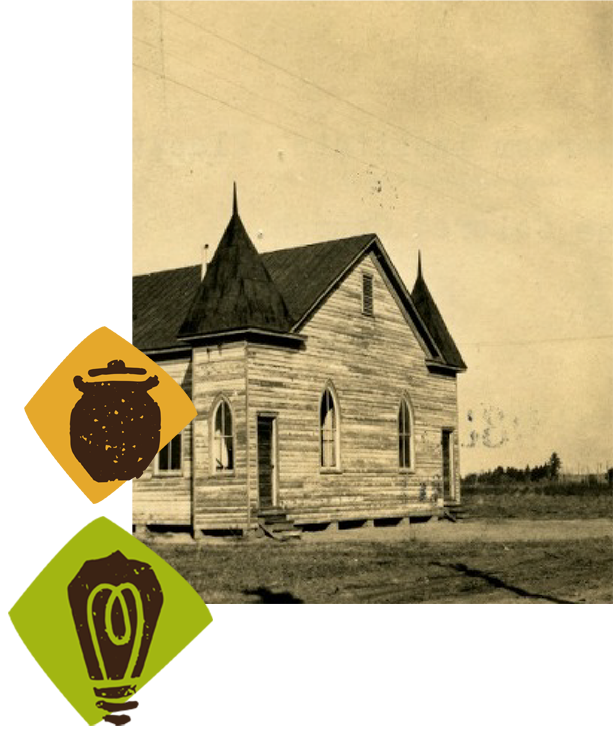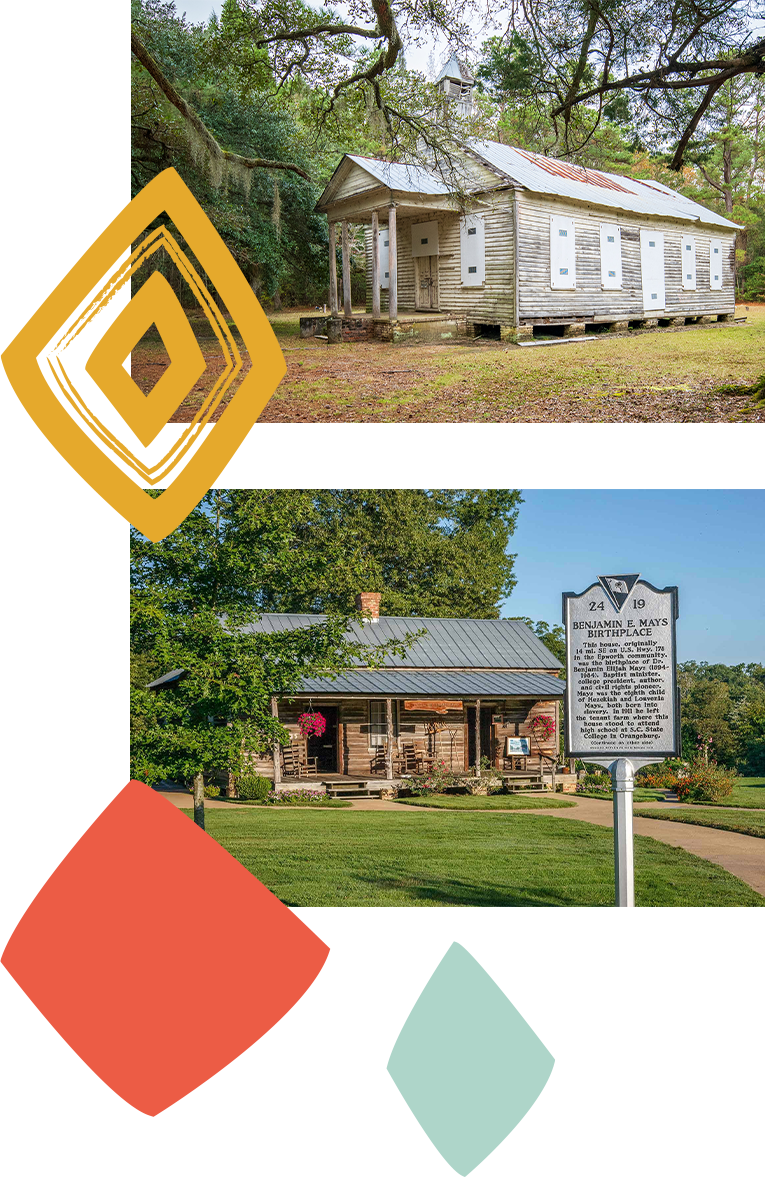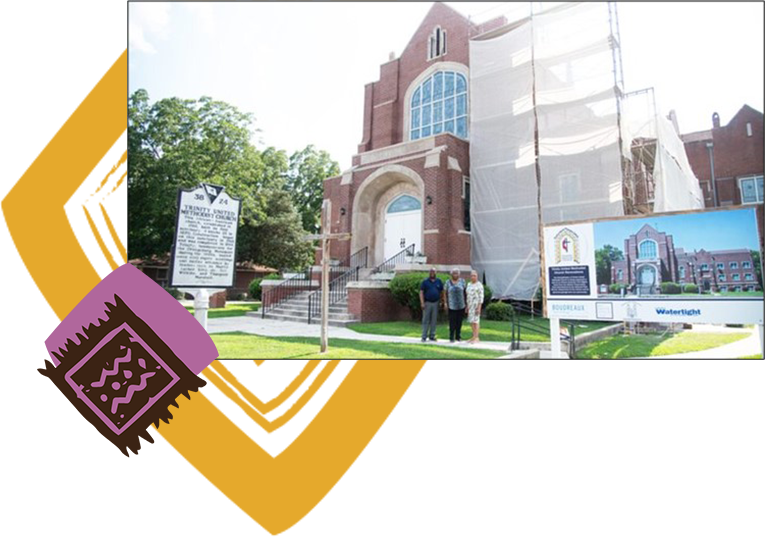African American Preservation in South Carolina
What is historic preservation?
And Why Do We Care About It?
Historic preservation is a movement and field of study, as well as a specific set of processes, which identifies, protects, and preserves historic resources. Historic resources most commonly include historically significant buildings and sites, but can also include landscapes, no longer existing spaces, artifacts, cemeteries, entire neighborhoods or towns, and more.
About Preservation
At WeGOJA, we care about historic preservation because it is a tool to help us preserve African American history, heritage, and culture in South Carolina. We passionately believe that Black history deserves to be preserved, celebrated, shared, and remembered because it is the foundation and fabric of South Carolina history itself. We know that African American historic resources are not preserved at nearly the rate of white historic resources and we seek to change that by making preservation easier to access for Black communities across the state.
You can read more on how the National Park Service defines historic preservation here.


A Background on Historic Preservation
Many historians cite the historic preservation movement as beginning with the Mount Vernon Ladies’ Association. This group of white women assembled to advocate for preserving George Washington’s home, Mount Vernon, when it faced possible demolition. The roots of historic preservation are white women attempting to save the slave-owning first president’s home so that it could be glorified and mythologized in our country’s narrative of the founding fathers. Historic preservation in the South was likewise focused on saving antebellum plantations as shrines to the “good old days,” the “lost cause” of the Civil War, and enslavement itself. During this time, those doing historic preservation were much less concerned with historical accuracy or truth, but about using a historic building to show a particular racist view of the past.
After WWII and the mass industrialization/urbanization of American cities, many historic buildings were being razed to make way for new and modern structures. In response to this, the National Historic Preservation Act of 1966 established sweeping legislation for historic buildings. Many of the historic preservation processes we know today came out of this act – such as the National Register of Historic Places.
While the National Historic Preservation Act of 1966 might have been founded as a way to push back against urban renewal, the reality on the ground today is that many historic preservation processes have evolved to contribute to the erosion of historic Black areas. It has not always been easy to get historic African American (or especially Indigenous, and other marginalized groups) sites listed on the National Register of Historic Places – the specific guidelines were not originally developed with these sites in mind. Although tax credit programs and rehabilitation may have saved physical structures, these processes have often allowed developers a path into historic African American communities and accelerated the process of gentrification, instead of preserving the community’s history. The problem with preservation is that it was about saving the physical buildings – and less about the people, the community, or their stories.
Many folks in historic preservation today are openly acknowledging these issues and pushing back against them. Many, particularly African American historic preservationists, are fighting today to use historic preservation in an equitable and just way to save their communities and amplify their stories. We stand today on the shoulders of the organizations and individuals who have been doing this work for generations, such as….. To learn more, explore their ongoing efforts to preserve our history.

The Reality of Historic Preservation For African American Communities
It is vitally important to acknowledge that one of the key reasons why African American historic resources are less often preserved, or seen as important to save, as traditionally white historic resources is that the historic preservation movement was not built for Black history or people.
We recognize that many of you from across the state will come to this Toolkit with direct experience of how preservation processes have actively sought to destroy your communities. You might see preservation as a tool of oppression, and have had negative experiences with it, leading you to be unlikely to trust or embrace preservation at all. The impacts of gentrification, urban renewal, and development have wreaked havoc and caused trauma for African American communities throughout the state and nation.
We also want to acknowledge that we have actually always preserved our own stories, heritage, and culture. Whether through passed down stories, or in knowledge held within historic African American schools and churches, our Black communities have long been preserving their history – it just wasn’t called historic preservation.
Preservation in the African American Community
Given that our African American communities have long been preserving our own stories, what we see as preservation and how we practice in our communities, differs slightly from traditional and academic understandings of historic preservation.
We want to break down the barriers between “professional” preservation and local community preservation. What is considered historic preservation by trained professionals and in the public history world is a narrow, specific definition, which typically refers to the preservation of spaces and places in the “built environment” – aka buildings or landscapes. But that is not only what local communities and laypeople think of when they think of preservation or are doing preservation in their communities – and the truth is that the vast majority of preservation work is being done on the ground by locals in their own regions.
The bigger, nationally relevant goal of this project is to expand our definition of what preservation can be and is already, especially for historically oppressed communities for whom the professionalized preservation movement has long excluded. The professionalized preservation movement was created to preserve white history at the cost of the erasure of oppressed people’s stories. We are instead re-envisioning preservation as something more inclusive and expansive that sees preservation as our local communities already do, as historical reclamation and memory work.


How We Define Preservation
We recognize that in SC in the African American community, preservation means lots of things and is not limited to structures and old buildings. It might include saving artifacts, telling stories (oral histories), and documenting your family history (genealogy). It includes recognizing the fabric of communities and traditions that have been lost or actively erased through the preservation of the tangible structures that are left.
In this toolkit, many resources are dedicated to the physical preservation of historic spaces and places, as we do have a specific focus on helping Black communities save those structures. But we are also including resources on collecting family or community oral histories, preserving family artifacts, and genealogy, as we understand these are important elements of African American historic preservation.
Please join us in our effort to preserve African American spaces, places, and stories in South Carolina.
Want To Learn More?
Explore Preservation At A Deeper Level
Glossary of Terms
Explore the language of African American Historic Preservation with our glossary. It’s our effort to make preservation more accessible and is the best way to get up to speed as you start your preservation journey.
A Primer For Preservationists
Preservation happens when people step up and fight to protect the places and stories that highlight African American history and culture. Get started today by downloading our “Getting Started” guide.
